What Should I Do If My Dog Shows Aggression Towards Other Dogs?
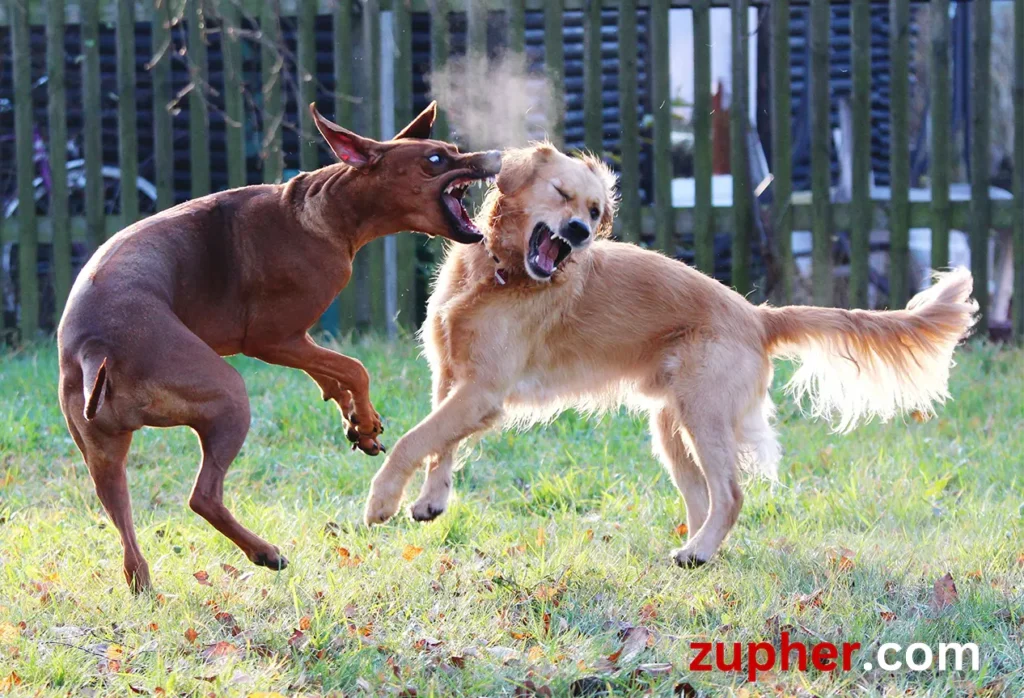
Introduction
A. Brief Explanation of the Issue: Aggression Towards Other Dogs
Sometimes, dogs can behave aggressively towards other dogs. This means they might growl, bark, or even try to bite them. This is a significant problem that requires careful consideration.
B. Importance of Addressing the Problem Promptly
It’s crucial to deal with this behavior quickly. Aggression between dogs can lead to fights and injuries. It can also make walks stressful and scary for both you and your dog.
C. Overview of the Article’s Approach
In this article, we’ll explore why dogs might act this way and what you can do to help. We’ll discuss training techniques, seeking professional help, and creating a safe environment for your dog and others.
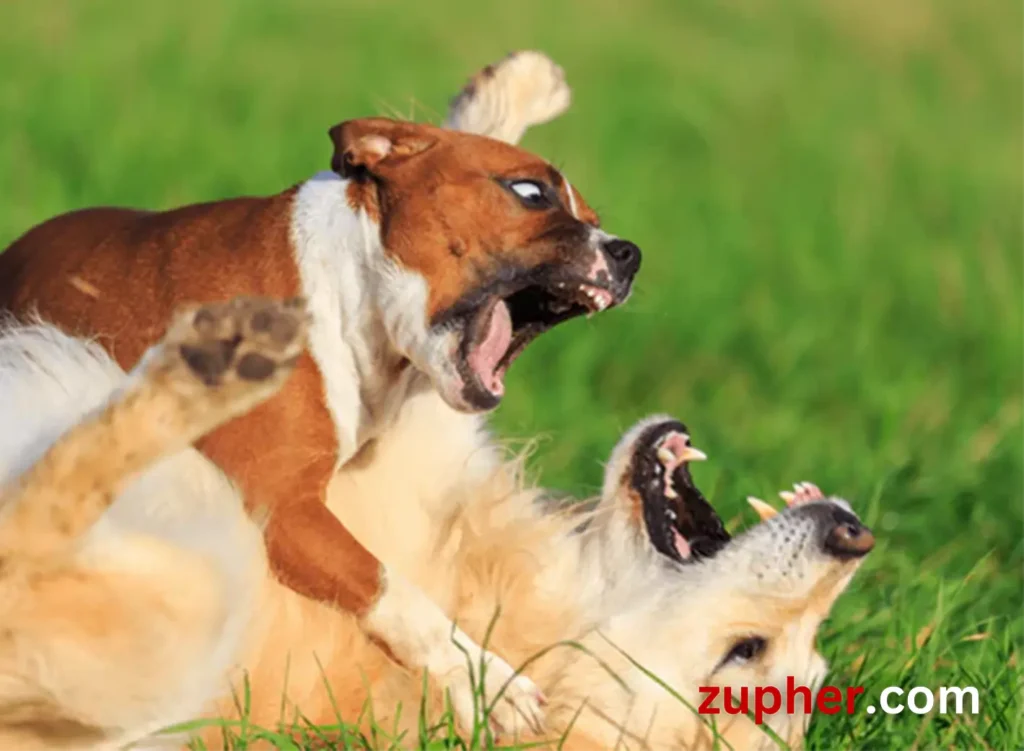
Understanding the Behavior
A. Types of Aggression in Dogs
- Fear-based Aggression: Sometimes, dogs act aggressively because they’re afraid. They might feel threatened and lash out to protect themselves.
- Territorial Aggression: Dogs can get aggressive when they feel like their space is being invaded. They might see other dogs as intruders.
- Possessive Aggression: Some dogs become aggressive when they feel like something valuable to them is being taken away, like food or toys.
- Social Aggression: This happens when dogs want to establish dominance or control over other dogs. It can lead to fights over status.
B. Recognizing Signs of Aggression Towards Other Dogs
- Body Language Cues: Watch out for signs like stiffening of the body, raised hackles, or intense staring. These can indicate that a dog is feeling aggressive.
- Vocalizations: Growling, barking, or snarling are clear signs of aggression. These vocalizations are ways dogs communicate their discomfort or anger.
- Contextual Triggers: Pay attention to what’s happening around your dog when they show aggression. It could be triggered by things like being on a leash, meeting new dogs, or being in crowded places. Understanding these triggers can help you manage the situation better.
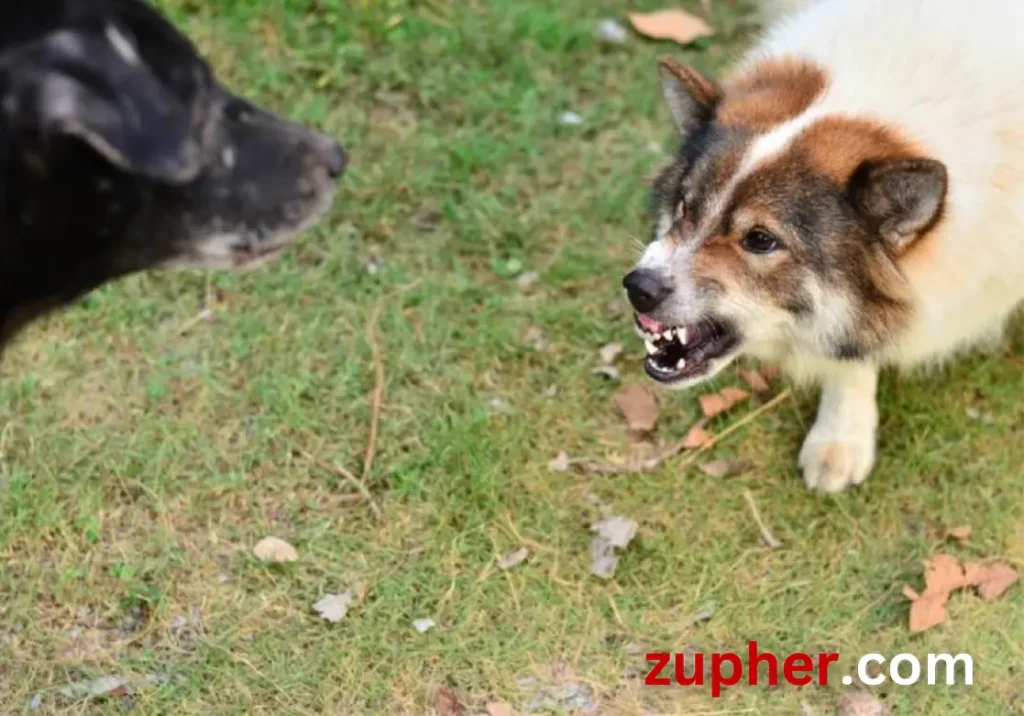
Identifying Triggers and Underlying Causes
A. Environmental Factors
- Location Triggers: Certain places might make your dog feel more aggressive, like dog parks or areas with lots of other dogs around.
- Resource Guarding Triggers: Dogs can become aggressive when they feel like something they value, such as food or toys, is being threatened or taken away.
B. Socialization History
- Early Experiences with Other Dogs: How your dog was introduced to other dogs during puppyhood can influence their behavior. Positive experiences can lead to good social skills, while negative ones might cause fear or aggression.
- Traumatic Incidents: If your dog has had bad experiences with other dogs in the past, such as attacks or fights, they might become more aggressive as a result.
C. Medical Considerations
- Pain or Discomfort: Dogs in pain or discomfort might lash out at other dogs as a way to protect themselves. It’s essential to rule out any underlying medical issues that could be causing discomfort.
- Neurological Issues: Sometimes, neurological problems can affect a dog’s behavior, including aggression toward other dogs. Consulting with a veterinarian can help determine if this is a contributing factor.
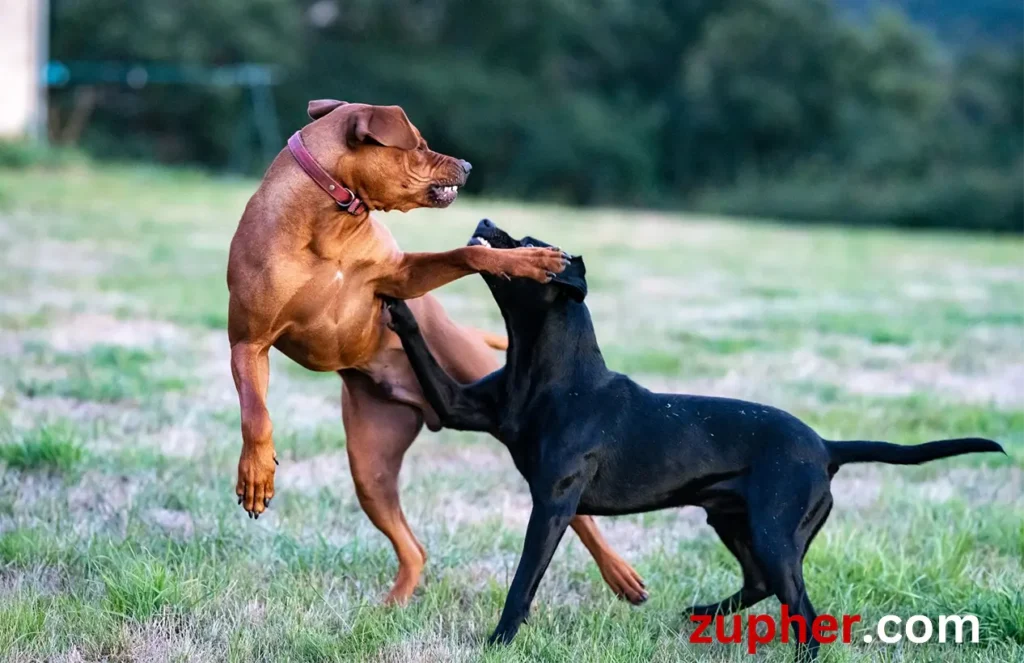
Seeking Professional Guidance
A. Importance of Consulting a Veterinarian
It’s crucial to see a vet if your dog shows aggression towards other dogs. They can rule out any medical issues that might be causing or contributing to the behavior.
B. Working with a Certified Dog Trainer or Behaviorist
A certified dog trainer or behaviorist can help you understand why your dog is aggressive and provide you with effective training techniques. They possess the knowledge to help you navigate the process securely.
C. Tailoring Interventions to the Individual Dog’s Needs
Every dog is unique, so it’s essential to tailor interventions to your dog’s specific needs. Different dogs respond differently to various methods. A professional can customize a plan that suits your dog best.
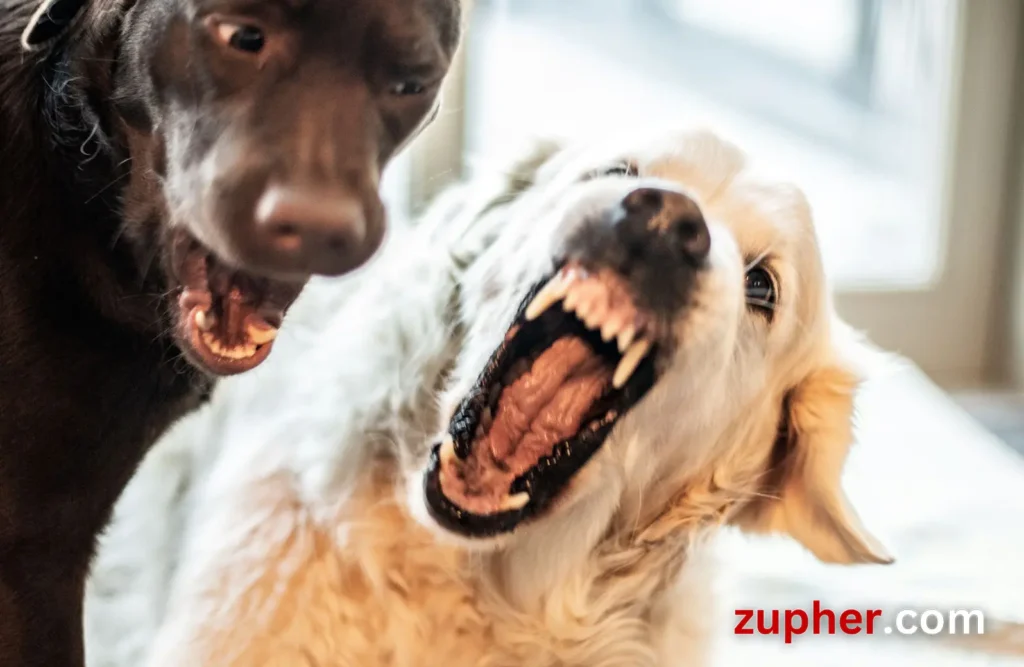
Management and Prevention Strategies
A. Avoiding Trigger Situations
Steering clear of situations that make your dog aggressive, like crowded dog parks or places with lots of other dogs, can help prevent conflicts.
B. Implementing Desensitization and Counterconditioning Techniques
Gradually exposing your dog to other dogs in controlled environments while providing positive experiences can help reduce their aggression over time.
C. Using Positive Reinforcement Training Methods
Rewarding your dog for calm and non-aggressive behavior around other dogs reinforces good habits and encourages them to repeat those behaviors.
D. Establishing Clear Boundaries and Rules at Home
Consistent rules and boundaries at home help your dog understand what behavior is expected of them, which can translate into better behavior around other dogs.
E. Ensuring Adequate Exercise and Mental Stimulation
Regular physical exercise and mental stimulation help reduce stress and boredom, which can contribute to aggressive behavior. Keeping your dog active and engaged can improve their overall demeanor.
Addressing Aggression in Multi-Dog Household
A. Managing Interactions Between Dogs
Supervising and controlling how your dogs interact can prevent conflicts and reduce aggression. Keep a close watch on their behavior and step in if necessary.
B. Providing Separate Spaces and Resources
Giving each dog their own space, such as separate sleeping areas and feeding stations, can reduce competition and potential triggers for aggression.
C. Gradual Reintroduction Techniques
If your dogs have had conflicts, reintroduce them slowly and carefully. Start with brief, supervised interactions in neutral territory, and gradually increase the time they spend together as they become more comfortable.
Legal and Ethical Considerations
A. Responsibility of Dog Owners towards Public Safety
As dog owners, we must ensure that our pets don’t pose a threat to others. This means taking measures to prevent aggressive behavior and keeping them under control in public spaces.
B. Compliance with Local Leash Laws and Regulations
Many places have laws requiring dogs to be kept on leashes in public areas. Following these regulations not only ensures the safety of other people and dogs but also avoids potential legal consequences.
C. Ethical Considerations in Managing Aggressive Behavior
It’s essential to handle a dog’s aggression humanely and responsibly. This involves seeking professional help, using positive reinforcement techniques, and prioritizing the well-being of both your dog and others.
Conclusion
A. Recap of Key Points
We’ve discussed various strategies for managing and addressing aggression in dogs towards other dogs, including understanding the behavior, identifying triggers, seeking professional guidance, and implementing management and prevention strategies.
B. Emphasis on the Importance of Early Intervention
It’s crucial to address aggression in dogs towards other dogs as soon as possible. Early intervention can prevent escalation and help improve your dog’s behavior before it becomes a more significant issue.
C. Encouragement for Seeking Professional Help When Needed
If you’re struggling to manage your dog’s aggression towards other dogs, don’t hesitate to seek help from a veterinarian, certified dog trainer, or behaviorist. These professionals have the expertise to provide guidance and support tailored to your dog’s specific needs.
People also ask
How can I prevent my dog from showing aggression towards other dogs?
Provide training, manage triggers, and seek professional help if needed.
How do you fix a dog-aggressive dog?
Use behavior modification techniques and consult with a certified dog trainer or behaviorist.
How do you socialize a dog that is aggressive to other dogs?
Gradually expose them to other dogs in controlled environments, using positive reinforcement.
How do you calm an aggressive dog?
Use calming techniques, remove them from the situation, and seek professional guidance.
Can dog aggression towards other dogs be fixed?
With proper training and management, many cases can be significantly improved.
How can I train my dog to get along with other dogs?
Gradually introduce them to other dogs in a positive and controlled manner.



